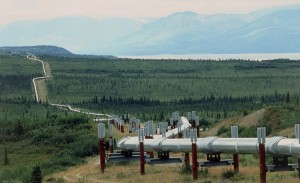By Shem Oiriere
 Construction of a new $1.55-billion, 550-kilometer multiproduct fuel pipeline linking landlocked Ethiopia and coastal Djibouti is set to commence next year. The two-year project will be supported by New York-based Blackstone Group LP-backed Black Rhino Group and Johannesburg-based Mining, Oil & Gas Services, a Royal Bafokeng Holdings subsidiary.
Construction of a new $1.55-billion, 550-kilometer multiproduct fuel pipeline linking landlocked Ethiopia and coastal Djibouti is set to commence next year. The two-year project will be supported by New York-based Blackstone Group LP-backed Black Rhino Group and Johannesburg-based Mining, Oil & Gas Services, a Royal Bafokeng Holdings subsidiary.
Both countries approved the project, also known as Horn of Africa pipeline (HOAP), in October. Joint-venture developer BRM HOAP Holdings anticipates a financial close next year and the the pipeline to come online in 2018.
The 20-in.-dia pipeline will transport diesel, gasoline and jet fuel from Djibouti Port to storage facilities at Awash in central Ethiopia, a country with an annual fuel demand growth rate of 15%.
Black Rhino founder and CEO Brian Herlihy had earlier said in a statement said the fuel pipeline will “increase energy security, support economic development and reduce harmful emissions.”
Currently, an estimated 500 tanker trucks transport fuel imports from Djibouti to Ethiopia’s capital, Addis Ababa, on a narrow two-lane 800-km road that Black Rhino says has reached “upper limits” of capacity.
“A purely trucking scheme will not be able to logistically meet Ethiopia’s demand requirements,” Black Rhino said in October.
“The trucking system causes issues with adulteration and theft of product in transit and road conditions.”
This is the second oil-pipeline project Ethiopia has signed with its neighbors. Earlier, an ambitious $29-billion transport and infrastructure agreement with Kenya, Uganda and South Sudan called for the development of a 2440-km crude-oil pipeline under the joint Lamu Port Southern Sudan-Ethiopia Transport (Lapsset) scheme. It involves construction of a 32-berth port in Kenya, a 880-km highway, a 120,000 barrel-per-day refinery in Lamu, three lots of resort cities and three lots of airports. So far, only the construction of the 32 berths has started.
A feasibility study by German-Austrian firm ILF Consulting Engineers estimates the crude-oil pipeline’s cost at $4 billion. It will connect oil fields in northeastern Kenya with those in Uganda and in South Sudan and end up at the crude-oil processing plant in Lamu.
Analysts say the Ethiopia-Djibouti fuel-product pipeline is not a threat to the Lapsset one unless the HOAP project results in the transportation of refined products that the proposed refinery in Lamu cannot match in price.
“The proposed Ethiopia-Djibouti pipeline does not have any adverse impact on the viability of the crude oil pipeline under Lapsset because it is being built to transport refined petroleum products,” said Denis Kakembo, senior manager with Deloitte East Africa.
“The biggest threat to the viability of the proposed Lapsset crude oil pipeline lies in the prevailing low crude-oil prices and the mixed signals whether Uganda would pair up with Kenya to move forward this project, and of course South Sudan and Ethiopia in the event of a commercial discovery of petroleum would subsequently join,” he said.
Black Rhino did not respond to email enquiries to confirm if the design is complete, whether the pipeline will be made of plastic or steel, and what is the planned number of pump stations.
It could also not be immediately confirmed if the two companies will be carrying out works such as pre-construction surveys, clearing, trenching, pipe stringing, welding and coatings themselves or sub-contract them out.
Source: ENR


